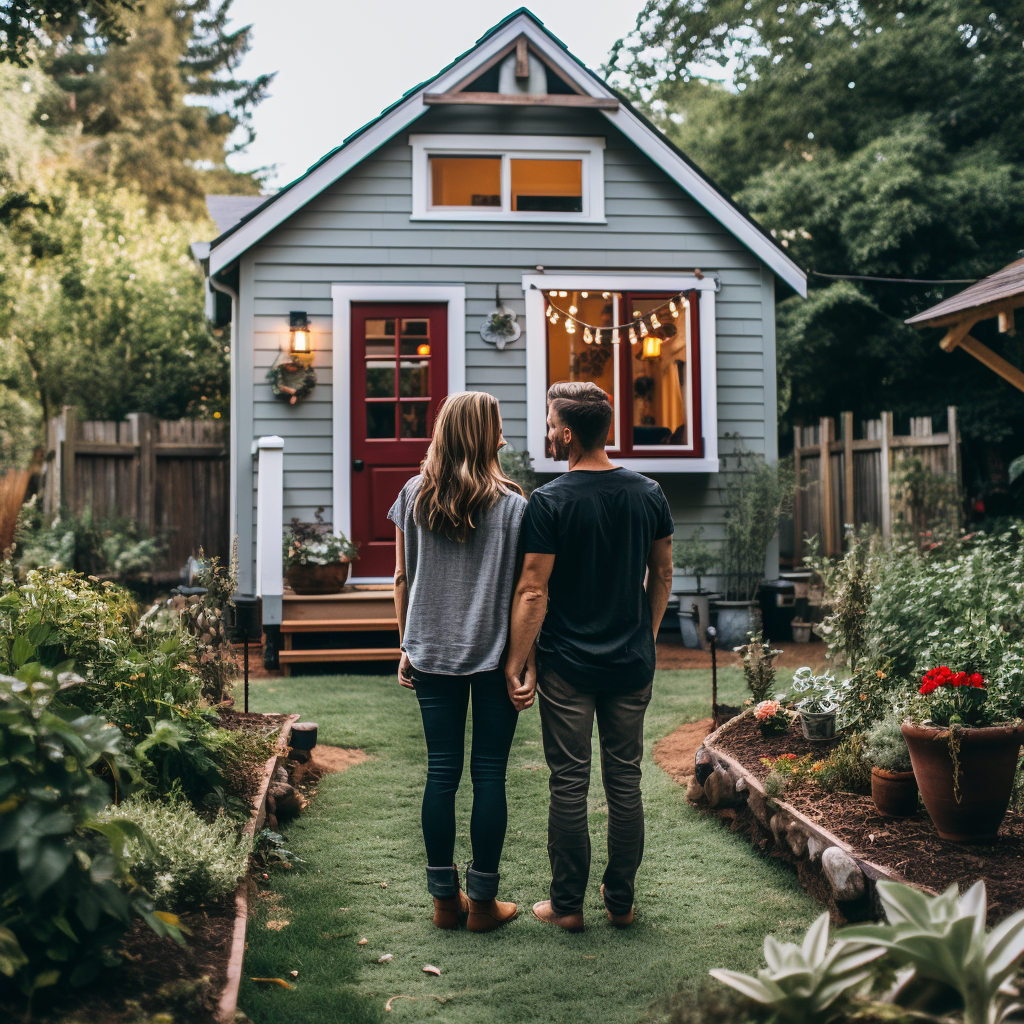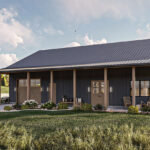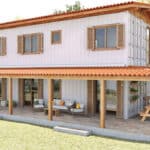The tiny house movement, a burgeoning social and architectural trend in America, is rapidly redefining what it means to lead a substantial, satisfying life in a compact living space. Born from a cocktail of financial considerations, environmental consciousness, and the pursuit of simplicity, this movement has captivated a significant portion of the American population, much like a grand narrative of a liberated, unhindered lifestyle far removed from the archetypical American Dream. This essay is an intriguing exploration into the motivations, societal and environmental impacts, legal challenges, and future speculations revolving around the intricacies of the tiny house movement.
Origins and motivation behind the Tiny house movement
Origins of the Tiny House Movement
The Tiny House Movement originated in the late 1990s and early 2000s in the United States, during a time of housing crisis and financial insecurity. This was a period marked by inflated housing prices and large amounts of debt, forcing people to reconsider their living arrangements. It is essentially an architectural and social movement advocating for downsizing living spaces for the betterment of quality of life, sustainability, and financial security.
Inspiration behind the Movement
The countless foreclosures, along with the continuation of wages not keeping up with cost of living expenses, made individuals across different demographics reconsider their needs and re-evaluate their concept of what a home should be. It was out of this context that many individuals found the inspiration to consider a tiny house as a viable option. The idea was bolstered by the concurrent growth of environmental consciousness and the desire for a simpler, less cluttered lifestyle. People were reassessing their consumption habits, realizing that larger homes not only meant higher mortgages but also required more energy for heating, cooling, and maintaining.
Adoption of the Tiny House Lifestyle
The early adopters of the tiny house movement were individuals of varied backgrounds: niche architects, sustainability enthusiasts, individuals looking for financial freedom, and those seeking a minimalist lifestyle. Many were attracted to the independence and autonomy offered by having a home that was affordable and had a lower environmental footprint. Early builders and dwellers of tiny homes documented their processes and experiences, which further spread the appeal of this alternative lifestyle.
Tiny houses also attracted those wanting to escape the modern pressures of fast-paced urban living. By reducing the size of their homes, people were able to reallocate their time and resources towards health, experiences, and relationships – aspects of life that they felt were neglected in traditional housing setup.
Tiny House Movement Today
Today, the tiny house movement continues to gain traction and evolve. More people are interested in downsizing and living more simply. However, progress has been inhibited by a variety of obstacles, which include zoning laws, building codes, insurance issues, and the ongoing resistance to change in societal norms. Despite these challenges, the tiny house movement continues to inspire a growing community of people reassessing their priorities and redefining their concept of ‘home’. The prevalence of television shows, blogs, and online platforms focusing on the tiny house lifestyle is a testament to its lingering impact.
The Influence and Lasting Impact of the Tiny House Movement
Although still considered outside the mainstream and challenging the dominant culture of larger homes defining success, the tiny house movement continues to turn heads by suggesting alternate norms of sustainable living. Its influence now can be seen in the way it has shaped housing and urban development strategies. Ingressive advocacy for more flexible residential zoning laws that cater to alternative housing options is a testament to this. Furthermore, the movement has sparked interest in community-style living, as seen with the emergence of tiny house villages offering shared amenities and communal spaces. With growing environmental and economic issues, the core values of the tiny house movement hold their ground and continue to be a source of motivation.
Impact on society and the environment
The Intersection of the Tiny House Movement and Contemporary Housing Market Trends
Leave no doubt that the tiny house movement has left a profound imprint on today’s housing market trends in the US. It offers a crucial solution to expensive housing; by paving the way for more affordable living options, it broadens the scope of home ownership to those who might’ve written off the idea of owning a conventional home. The ripples of this movement in the real estate market can be seen in the diversification of available housing options. Smaller living spaces have become an increasingly sought-after choice, particularly in bustling urban locales where land and housing come at a premium. In comparison, this movement potentially curbs the demand and subsequently the value of larger houses, as a growing segment of the population is now gravitating towards the tiny house lifestyle.
Community Development and the Tiny House Movement
The tiny house movement’s unique approach to housing also impacts community development. The movement fosters a strong emphasis on communal living and shared spaces, with many tiny house communities forming around the country. These communities have proven particularly effective in combating homelessness, providing affordable and sustainable housing options for those in need. In addition to providing affordable lodging, tiny house communities often function as supportive spaces for their residents, generating a strong sense of community and camaraderie. However, this movement also encounters resistance in certain communities, especially those with strict zoning laws.
Environmental Sustainability and Tiny Houses
From an environmental standpoint, the tiny house movement contributes significantly to sustainability. Tiny houses typically have a smaller carbon footprint due to their small size and efficient use of resources. By virtue of their design, tiny houses require less energy for heating and cooling, resulting in lower greenhouse gas emissions. In many cases, tiny houses are also built with eco-friendly materials and designed to utilize renewable energy sources which reinforces their contribution towards environmental sustainability. On a larger scale, the movement’s emphasis on downsizing and simple living challenges the mainstream consumption-heavy lifestyle, potentially fostering more sustainable habits among the wider population.
However, just like anything else, the tiny house movement has its drawbacks, the most notable of which is potential waste generation. The danger lies in the possibility of unused traditional houses or materials wasting away if the shift toward tiny homes continues. Similarly, the movement won’t have a significant environment impact if the majority of tiny homes aren’t built with sustainability in mind.
Summing Up
The tiny house movement, despite having encountered obstacles ranging from societal attitudes to regional barriers, appears to be making strides in shaping diverse housing markets, fostering self-reliant communities, and promoting a more environmentally conscious society. Regardless of the potential hurdles and setbacks, the impact that the movement is having on the American public and the environment is undeniably positive.
Challenges and legal issues encountered
Legal Hurdles and Building Codes within the Tiny House Movement
While the tiny house movement is leaving a profound mark, it holds its unique sets of challenges. Among the most prominent is navigating the labyrinth of legal requirements, notably zoning laws and building codes. These laws and regulations greatly vary depending on the state, city, or even neighborhood. One primary concern often revolves around securing a legal spot for settling a tiny house. This is made particularly challenging by the fact that many jurisdictions have minimum square footage regulations for residential properties, typically exceeding the size of a standard tiny home.
This predicament extends to the conversion of compact structures such as garden sheds or garages into tiny homes. Legal complications may arise as these structures often do not meet the criteria to be classified as lawful dwellings. In addition to this, usual building codes may be a more significant issue as they are largely designed to cater to conventional homes rather than tiny ones. Thus, tiny house owners often find themselves negotiating a bureaucratic labyrinth for their distinctive homes, exposing them to fines or even evictions in extreme instances.
Tiny House Movement: Limited Space and Societal Perception
The restrictions of tiny living also pose a significant challenge. The limited space can be taxing as it means less room for possessions, complications for hosting guests, and fewer options for personal privacy. This can lead to feelings of irritation and tension among tiny house occupants, especially those sharing the confined space with others.
On a broader scale, societal perception plays a significant role in creating hurdles for the tiny house movement. Tiny houses deviate from the typical American ideal of a large, spacious dwelling, and as such, can sometimes be stigmatized or misconstrued as indicative of a lower socioeconomic status. This perception has worked against acceptance and adoption of tiny house living on a broader scale.
Adapting The Tiny House Movement to Legal Frameworks
While these hurdles have had a profound impact on the tiny house movement, they haven’t completely squashed it. Authorities are slowly adapting to the need for alternative housing solutions. Some cities are changing their zoning laws, especially in response to housing unaffordability and homelessness crisis.
For example, Fresno, California, has emerged as a leader, working towards integrating tiny homes into their city housing plan. Other places, like Spur, Texas, have designated themselves as tiny house-friendly cities, inviting individuals to come and build without minimum square footage requirements.
In summary, even though the growth of the tiny house movement has encountered certain legal and societal obstacles, it has not been completely halted. As reflected by some innovative adaptations, the movement is still making steady strides towards progress. But, whether or not the movement will continue to blossom largely depends on how effectively it can navigate these hurdles and foster a more accommodating atmosphere for tiny living.
Future of the Tiny house movement
A Brief History of the Tiny House Movement
The roots of the tiny house movement lie deep within an evolving cultural focus towards minimalistic living and sustainability. This shift in attitude emerged as a response to the global financial crisis of 2008, in addition to the escalation of environmental concerns. The mission wasn’t complex; it was merely to build a humble dwelling that includes the essentials and eradicates the need for a hefty mortgage or towering utility bills. Fittingly referred to as ‘tiny houses’, these compact spaces generally span from 100 to 400 square feet and emerged as an attractive solution for those yearning for financial liberation and a less complicated lifestyle.
Growing Popularity and Societal Acceptance
The popularity of the tiny house movement suggests it is more than just a temporary fad. It has received considerable media attention, inspiring several reality television shows and making regular appearances in lifestyle and architecture magazines. This visibility has helped the idea gain traction among a diverse audience, from millennials looking for an affordable first home to retirees aiming to downsize without sacrificing comfort.
The Future of the Tiny House Movement
Yet, despite its rising popularity, critics argue that the tiny house movement will always lack mainstream appeal due to the inherent difficulty of living in such small quarters. Many believe the market for tiny houses is niche, appealing to a relatively small group of people who prioritize minimalistic lifestyles, freedom from debt, and ecological consciousness above other benefits associated with traditional housing.
However, the growth of larger movements such as sustainability and remote work could continue to fuel interest in tiny houses. As environmental concerns develop, more people might pivot toward smaller, energy-efficient housing options. Similarly, the growing trend of remote work might make tiny houses more appealing to those who no longer have to live close to their workplaces.
Potential for Growth and Acceptance
The future growth and acceptance of the tiny house movement depend to a great extent on changes in policy and public sentiment. Many American cities currently have restrictions on the size of dwellings, preventing the construction or parking of tiny homes. If there were shifts in housing regulations to accommodate tiny houses, the movement could potentially gain more momentum.
At a societal level, acceptance of tiny living could be driven by economic conditions. As housing prices continue to rise, more people — especially young individuals and families — might be pushed toward affordable, alternative housing options like tiny houses.
The Tiny House Movement: A Global Trend?
While the tiny house movement has been largely U.S.-focused thus far, there are signs of it spreading internationally. In Australia, New Zealand, and some European countries, individuals and governments have shown interest in tiny houses as a potential solution to issues such as housing affordability and homelessness. If these nations embrace the tiny house movement, it could signal a more significant, global shift toward smaller, sustainable housing.
The transgression away from opulence towards a minimalist lifestyle influenced by financial frugality, ecological mindfulness, and nominal living, exemplified by the tiny house movement, has fundamentally challenged the projection of the traditional American dream. Yet, the confluence of zoning laws and building code obstacles, along with apprehensions about cramped spaces and subjective societal perception, forms a labyrinthine challenge that tiny house enthusiasts must navigate. However, with an unwavering trajectory towards a sustainable future and the propensity to adapt and overcome, the tiny house movement stands tall as a beacon of lifestyle revolution, rather than a mere fleeting fad. Thus, surveying the landscape of this movement brings to focus not just a singular architectural trend, but a broader, nuanced panorama of socio-environmental dynamics, opening up avenues for further introspection and research.
You may love to read!
A Step-by-Step Guide to Building a Tiny House:Sample $100.000 white cottage














